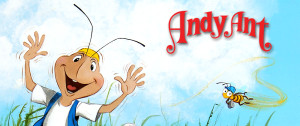
Story Writing Hints
By
Gerald D. O’Nan
Author of the
Adventures of Andy Ant Books
(Note: I will try to give you hints and ideas about writing stories using the 8 books in The Adventures of Andy Ant as examples. Having a set of the Andy Ant books available will help you understand the context better, but it isn’t necessary if you have a good imagination.)
Characters – Based on People You Know
Who are the people in your story? I stated in an earlier hint that I write about things that I know or things that have happened to me. Similarly, the easiest way to develop your characters is to write about people you know, using their personalities to define your characters.
For example, in The Adventures of Andy Ant, the principal character, Andy, is based upon a composite of several people I knew growing up. For example, Andy refers to himself as a “philosopher.” My cousin, Don, often referred to himself as a philosopher and much of his personality is woven into Andy’s. Like Andy, my cousin would try to talk in a philosopher’s voice – very contemplative, sometimes deep-voiced – and at least acted like he often analyzed problems before taking action. In addition, I was fortunate to have more than one friend who always tried to take the “high road” and that usually kept us out of trouble. These were all part of Andy’s personality.
The character Joey is actually me and every adventure that Joey has with Andy is based upon events in my own life. Andy’s brother, Parker, is based on my own brother who wore horned-rim glasses, listened to a bit of classical music along with Broadway show tunes, and was a bit of a nerd in his own way. Dickter – Andy’s best friend – was one of my very best friends. My real-life friend had a speech impediment that was the springboard for the story Runaway Ants. I will detail more of that story in a later blog.
Make some notes about the personalities of your characters. Write a character sketch. In writing this character sketch I think it is valuable to give each of your characters a “personality test.” Is your character kind most of the time? Does the character scare easily? Is the character thoughtful and contemplative or is the character flighty and compulsive, prone to getting into trouble? The list of traits goes on and on, but make a few notes about each character, especially if you intend to write a series of stories like The Adventures of Andy Ant.
The character sketch is even more important if you are creating the entire character from scratch or if the character is a composite of personalities from people you know.
Each story in a series is a stand-alone story but it’s also part of a bigger picture. Therefore, you want to make sure your characters maintain the same personalities throughout the series. However, if you are writing a chapter book, the characters have the opportunity to “grow” and change their personality as the story develops.
Copyright © 2023 by Gerald D. O’Nan All Rights Reserved. No part of this document may be used or reproduced by any means, graphic, electronic, or mechanical, including photocopying, recording, taping, or by any information storage retrieval system without the expressed written permission of the author except in the case of brief quotations embodied in critical articles and reviews.



